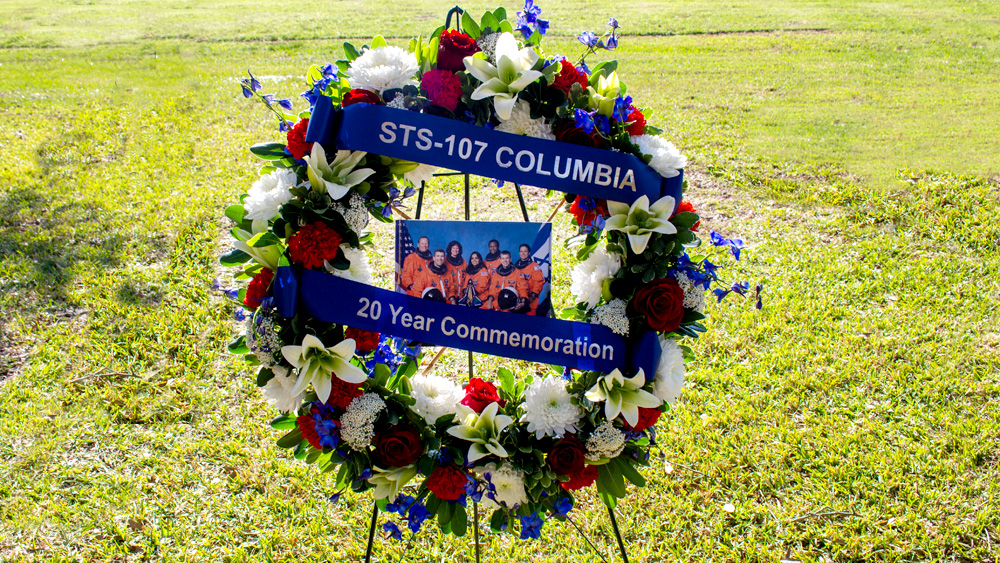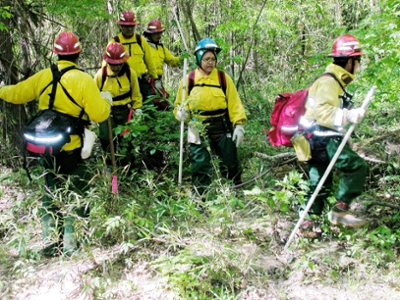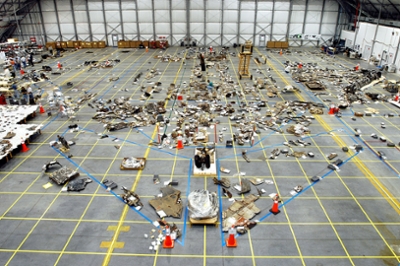
“Columbia is a part of our history, and we need to remember and learn from it,” said Ronald Lee ’86.
On Feb. 1, 2003, the Columbia shuttle re-entered Earth’s atmosphere but never touched down. Hot plasma that was heated to 2,400 degrees Fahrenheit entered the left wing and melted the interior, burning through sensors and hydraulic lines and eventually destroying structural integrity of the wing. Evidence from debris showed that this damage caused the wing to break off and the vehicle to break apart, killing all seven astronauts on board.
The disaster shocked the nation and left NASA officials with two questions: What happened? How do we make sure it doesn’t happen again?
It was determined later that the cause of the fatal event happened two weeks before, when the shuttle launched, 81 seconds into the flight. Insulation foam from an external tank broke off and hit the left wing of the shuttle. At the time, Lee, industrial engineering former student and chief of NASA’s Office of Emergency Management at the Johnson Space Center, said people thought there was no way that would cause a hole in the wing.
However, when the shuttle missed its landing time back on Earth, NASA officials knew something was very wrong.
“The foam on the external tank is the consistency of a Styrofoam cup, and the leading edge of the wing is made out of reinforced carbon that’s probably a quarter-inch, maybe a half-inch thick,” Lee said. “They thought there was no way that light-weight foam could hit and punch a hole in the wing. But they were all wrong.”

As the shuttle broke apart, the debris field stretched as far north as Fort Worth, Texas, and as far southeast as Fort Polk, Louisiana, where three main engine turbo pumps were buried 14 feet in the soil. Within hours of the disaster, people were on the move to start the recovery effort.
From Feb. 1 through Memorial Day weekend that year, more than 15,000 personnel were involved in the recovery effort. Disaster field offices were established across the state to help representatives from 290 federal, state and local agencies, as well as volunteer groups. The goals: ensure public safety, recover the crew and retrieve evidence to learn what caused the accident. In the end, 23 square miles of waterway and 2.28 million acres of forest and field were covered through ground and air searches.
Lee, who served as incident commander at a base in Corsicana, Texas, said the recovery effort paid off. Remains of each crew member were recovered, and 36% of the shuttle was found, which easily beat the 5% they originally thought they’d recover, thinking most of the vehicle had burned up. The debris was eventually transferred to the Kennedy Space Center in Florida, where officials reconstructed the vehicle to try to determine the root cause of the accident.
The post-disaster investigation identified the engineering reason for the failure, but more than that, they reported how workplace culture issues at NASA had also led to the disaster.
Dr. Nancy Currie-Gregg, professor of engineering practice in the Wm Michael Barnes ’64 Department of Industrial and Systems Engineering and the Department of Aerospace Engineering, started her career with NASA in the 1980s. She served as an astronaut on four missions, the last one in 2002. After the accident, she was selected to lead the Space Shuttle Program Safety and Mission Assurance Office, enabling the safe return to flight of the Space Shuttle.
“Throughout my flying career, even (American) astronauts thought 99% of the risk was in sitting on that pad in a fully fueled rocket and during ascent. That's called a cognitive bias because our only accidents had happened during those times. But if we were to ask our Russian colleagues, they would have had a completely different perspective because both of their accidents happened on entry. Perspectives were completely different.”
Addressing the physical issues was one thing, but the harder problem was addressing the organizational and workplace culture issues that had been a part of the agency since day one. Factors ranged from schedule pressures to meet construction and launch timelines, lack of an integrated systems engineering protocol and the inherent bias that comes from NASA achieving the difficult and making it look common.
“We did a really good job of making the hard look easy,” Currie-Gregg said. “That was our job at NASA: do the impossible.”
This continual persistence to achieve, however, led to officials normalizing deviation from proper procedures.
“It’s a very gradual, kind of insidious process through which unacceptable things become acceptable because nothing bad happened,” Currie-Gregg said. “There's this term in NASA called accepted risk. There is no such thing as a zero-risk space flight, but how do you decide how much risk is acceptable?”
Lee likened it to being on a ladder, where he knows he shouldn't lean from side to side. However, when he put Christmas lights on the house last year, he was able to lean a little bit to the right to hang lights and nothing bad happened.
We did a really good job of making the hard look easy. That was our job at NASA: do the impossible.

“I took a risk, and there were no bad consequences,” Lee said. “As humans, when we take risk and nothing negative happens, we then tend to take more and more risks. With Columbia, we got comfortable with stuff hitting the vehicle, and we should have never gotten comfortable with that.”
In context of the shuttle, Lee said foam came off the external tank during every mission, and while concerns were raised during the first dozen flights, somewhere along the way, officials were led to believe that it would just cause external — not operational — damage.
The overall warning from the report was that if NASA didn’t change its ways culturally and organizationally, it was on the path to another accident. Recommendations included forming or hiring independent system engineering groups and safety organizations. Currie-Gregg’s job changed to leading the newly formed NASA Engineering and Safety Center, which continues to do independent assessments of all NASA programs and projects.
Another lesson was to proactively solicit alternative opinions and be willing to hear bad news. Lee said a person who had just started at NASA deserves to be heard as much as someone with more than 30 years of experience.
“You’re just as smart as I am, you have a whole different experience, you come from a different background, you have value to add,” Lee said. “If I don't listen to you, then what's the use of you even being there? We need to take advantage of the whole team, bring people in.”
“We didn't cancel the program,” Currie-Gregg said. “We made sure that there was an acceptable level of risk and that everybody understood the level of risk because we mischaracterized the risk before the Columbia accident.”
Today, NASA follows policies to ensure that a disaster like Columbia — and the underlying causes behind it — are not repeated. Lee said he continues to appreciate the community that helped recover Columbia to this day.
“It was a very traumatic event for all of us at NASA, but going out and being among the people of East Texas was very therapeutic for me,” Lee said. “I quickly realized it wasn't just us that were grieving, it was the whole nation. You realize you're not in it alone, that people are there as part of your support network.”
Addressing Safety in Curriculum
Dr. Currie-Gregg created the course ISEN 434/671, Human Error and Resilient System Design, in 2017 specifically to educate students about the risk of human error when designing and operating complex systems.